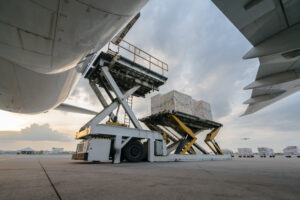Apr 04, 2024

The figures for the air transport market in Mexico are compelling: 118.1 million passengers were transported in 2023, 10.6% more than in 2022, the highest figure in its history. 54% of the traffic corresponded to domestic passengers, positioning Mexico as the second domestic market in Latin America, behind Brazil.
This is a positive trajectory. “During the last 15 years, both the domestic and international markets have grown steadily at an average of 5.7% and 5.1%, respectively, figures that are above the world average,” highlights the ALTA Aviation Insight Mexico, a compendium of air transport statistics in the country carried out by the Latin American and Caribbean Air Transport Association (ALTA).
For his part, José Ricardo Botelho, executive director and CEO of ALTA, delves into the fact that “the Mexican air market still has enormous potential: its per capita travel indicator stands at 0.87 trips per capita, substantially higher than the regional average of 0.6 trips/capita, but almost three times lower than its neighbor the United States (2.53 trips/capita). It is an industry that has created 72 new post-pandemic routes to bring Mexicans even closer together and that can still grow much more,” he adds.
READ: Air Traffic in Latin America and the Caribbean grows 7.6%
Botelho presented the report that ranks several key indicators of aviation demand and capacity, such as major airports and city pairs in the country in terms of volume and growth. The statistics are based on data provided by the Amadeus Travel Intelligence Platform, which contains information on airline traffic and timetable databases that feed the world’s global distribution systems and travel portals, as well as authorities and operators in the country.
This report indicates that during 2023, the aviation industry in Mexico had a total growth of 10.6% in passenger traffic, 7.8% in seat capacity, and 4.3% in operated flights, “however, on average, inhabitants still fly less than once a year, which tells us that there is still a lot of work to be done,” contrasts the CEO of ALTA.
Although the figures are positive, there are aspects that play against the sustained growth of the industry in the country, such as the high cost of taxes, the lack of investment in airports, among other aspects that disadvantage the performance of a key industry for international tourism, which contributes 14.9% of GDP and 12.2% of jobs in Mexico.
One of the aspects affecting the sustained growth of aviation in Mexico is the high taxes imposed on the industry. In Mexico, an average of 104 USD is paid in international fees and taxes, plus 4% in base fare taxes, positioning the country as the third in the region where passengers pay the most in total fees and taxes, only after Argentina and Jamaica. In 2024, the AICM Airport Use Fee increased by 3.2%, making it one of the highest in the world. The TUA is a charge made by airports to passengers for using their facilities, it is a fee that can represent up to 60% of the cost of an airline ticket, according to the business model of each airline.
READ: Sustainable aviation’s future: Key talks at the ALTA Conference
Among the challenges mentioned is the infrastructure in Mexico that is considered insufficient to meet the demand for flights, leading to congestion at airports. This lack of adequate infrastructure limits the potential for growth. In addition, there is a level of legal uncertainty surrounding Mexico’s air market, which affects investment and long-term planning.
“In 2023, 42.2 million tourists visited Mexico, generating a contribution of 30,809 million dollars to the Mexican economy. Of the total number of tourists, 20.32 million entered by air and contributed 90% of the total foreign currency that entered the country through tourism, these data clearly show us the importance of air transport for the generation of economic benefits in Mexico,” highlights the CEO of ALTA.
Aviation, explains Botelho, is a powerful economic catalyst, it is an industry that generates social and material benefits that translate into well-being for an entire country and even for the region, but it is also a sector that requires legal certainty, predictability for investments, development of airport infrastructure, optimization of operating costs; These aspects are key for Mexican aviation to receive the necessary boost to develop its full potential.
The post Partnership highlights potential of better-connected Latin Americna and Caribbean market appeared first on AIR CARGO WEEK.
Go to Source
Author: Edward Hardy




